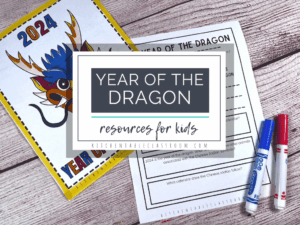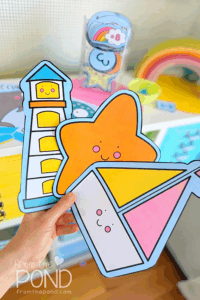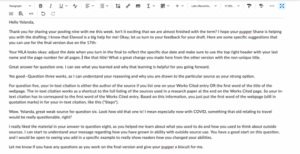If you’ve ever read a student’s writing and found yourself saying, “Tell me more!”, you’re not alone. Elementary students, second graders especially, are just beginning to learn how to transition from short, simple sentences to more descriptive and informative ones. The concept of stretching a sentence provides students with the tools they need to add details, paint vivid pictures with their words, and build confidence in their writing.
Teaching sentence stretching helps young writers move beyond the basics of “The dog ran” to something more vivid, like “The furry brown dog ran quickly through the tall, wet grass.” With the right tools and scaffolding, students can learn to elaborate, expand, and enhance their writing with confidence.

What Does “Stretching a Sentence” Mean?
Stretching a sentence means taking a simple sentence and adding more information to make it richer and more detailed. This often involves answering the questions of who, what, when, where, why, and how. It’s about helping students think like authors, encouraging them to visualize the scene and describe it clearly for their readers.
For example:
- Original: The girl laughed.
- Stretched: The little girl with curly hair laughed loudly as she played tag at recess.
Why Teaching Students to Stretch Sentences is Important
By second grade, students are learning how to organize their thoughts into paragraphs and communicate ideas clearly. Teaching sentence stretching helps students:
- Improve sentence fluency
- Build descriptive vocabulary
- Learn to revise and expand their writing
- Engage their audience with better detail
Stretching a sentence also supports reading comprehension. When students are better at expressing details in their writing, they become more adept at recognizing those same elements when reading.
Would you like a free sample of my daily sentence stretching practice sheets? Sign up below and have them sent to your inbox today!


How to Teach Sentence Stretching
Here are a few strategies to try in your classroom:
1. Use a Stretch-a-Sentence Chart
Create an anchor chart that lists guiding questions:
- Who is the sentence about?
- What did they do?
- When did it happen?
- Where did it happen?
- Why did they do it?
- How did they do it?
Model how to use the chart with a simple sentence and think aloud as you stretch it.
2. Turn It Into a Whole-Class Game
Start with a basic sentence on the board. Go around the room, asking students to add one word or phrase at a time. Challenge them to use adjectives, prepositional phrases, or strong verbs.
Example progression:
- The cat slept.
- The fluffy cat slept.
- The fluffy cat slept on the windowsill.
- The fluffy cat slept on the sunny windowsill all afternoon.
I explain this routine when creating genius sentences. We began with silly examples, then practiced the routine using academic sentences that students could incorporate into their informational texts.
3. Use Sentence Stretching Templates
Provide writing templates that include blanks for the different sentence parts. These scaffold the process and give students a framework to follow.
Template example:
The (adjective) (noun) (verb) (where) (when) because (why).
4. Highlight Stretchy Sentences in Mentor Texts
Read a picture book aloud and point out well-stretched sentences. Discuss what details the author included and how they help the reader visualize the scene.
📚 Mentor Texts and Stretchy Sentence Examples
1. Owl Moon by Jane Yolen
Sentence: “It was late one winter night, long past my bedtime, when Pa and I went owling.”
Why It’s Great: Yolen stretches the sentence with when, who, and what details—setting the scene with mood and timing.
2. The Snowy Day by Ezra Jack Keats
Sentence: “He walked with his toes pointing out, like this.”
Why It’s Great: A short action is extended with how it was done—this is a great example of adding how details in a child-friendly context.
3. Come On, Rain! by Karen Hesse
Sentence: “Mama lifts a cotton sheet, and the corners snap, crisp as crackers.”
Why It’s Great: Rich similes and adjectives show how to add sensory detail (what it looks/sounds like).
4. A Bad Case of Stripes by David Shannon
Sentence: “Camilla Cream loved lima beans, but she never ate them.”
Why It’s Great: This sentence uses contrast to add interest—students can learn that even small additions like “but” can stretch ideas.
5. Miss Rumphius by Barbara Cooney
Sentence: “When she grew up, she wanted to travel to faraway places and live by the sea.”
Why It’s Great: Shows when and adds two detailed what goals—ideal for teaching sentence expansion in narrative writing.
6. Alexander and the Terrible, Horrible, No Good, Very Bad Day by Judith Viorst
Sentence: “I went to sleep with gum in my mouth and now there’s gum in my hair.”
Why It’s Great: A simple action (“I slept with gum”) is expanded into a cause-and-effect sentence with detail.
7. The Relatives Came by Cynthia Rylant
Sentence: “It was in the summer of the year when the relatives came.”
Why It’s Great: This opening gives when and sets up who and what, modeling how to stretch an introductory sentence.
🪄 How to Use These Mentor Sentences in Your Classroom
- Display the sentence on chart paper and underline the parts that answer who, what, when, where, why, how.
- Rebuild the sentence from a basic version and “stretch” it together as a class.
- Have students mimic the structure with their own topics (e.g., “It was in the summer when we went to the beach.”)
- Create a “Stretch Like an Author” anchor chart with examples from books they know.
5. Encourage Drawing First
Let students draw a picture before writing. Then prompt them to describe every part of their picture using complete sentences. Drawing helps generate ideas and gives a visual base for details.
Quick Tips for Classroom Success
- Practice daily with morning message sentences or during writing warm-ups.
- Display examples of stretched sentences on a bulletin board.
- Pair students to stretch each other’s sentences during peer editing.
- Celebrate student writing by sharing before-and-after sentence examples.
Stretching a Sentence Builds Strong Writers
When second graders learn how to stretch a sentence, they begin to see writing as a way to share more than just facts—they learn to communicate feelings, actions, and imagery. With regular practice, sentence stretching becomes a powerful part of your students’ writing toolbox.
If you’re ready to bring this strategy into your daily routine, I’ve created a yearlong set of Sentence Stretching Prompts with seasonal themes, grammar challenges, and easy-to-use templates. It’s a quick and consistent way to help your students build stronger sentences—one day at a time.
👉 Click below to grab the Yearlong Sentence Stretching Bundle.


Stretch a Sentence YEARLONG BUNDLE Daily Writing Prompts Sentence
Support your students in writing stronger, more descriptive sentences all year long with this Bundle of Monthly Sentence Stretching Prompts! With monthly themes and seasonal topics, this resource builds consistency, grammar awareness, and writing confidence in just a few minutes a day.



